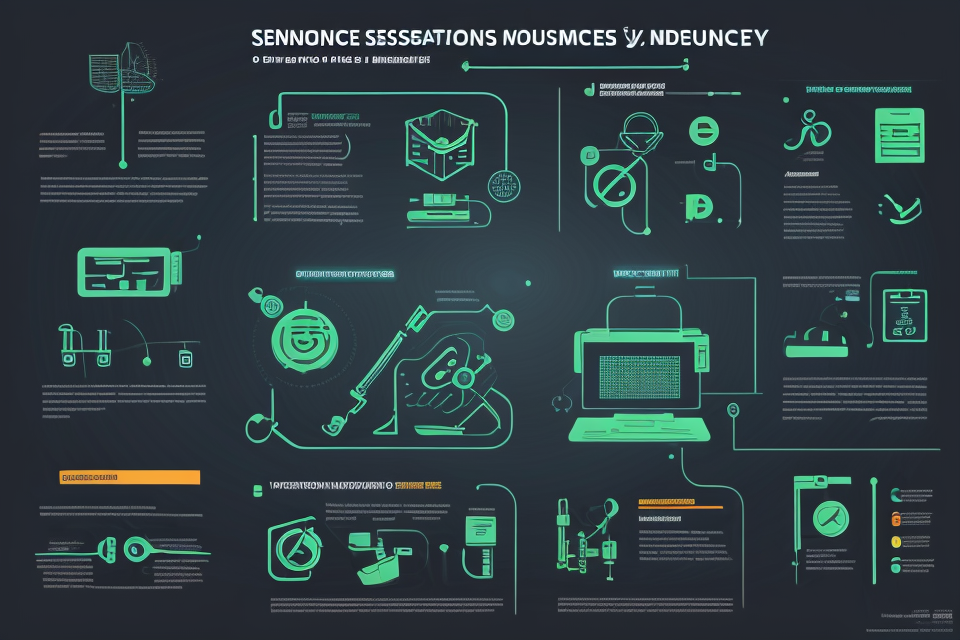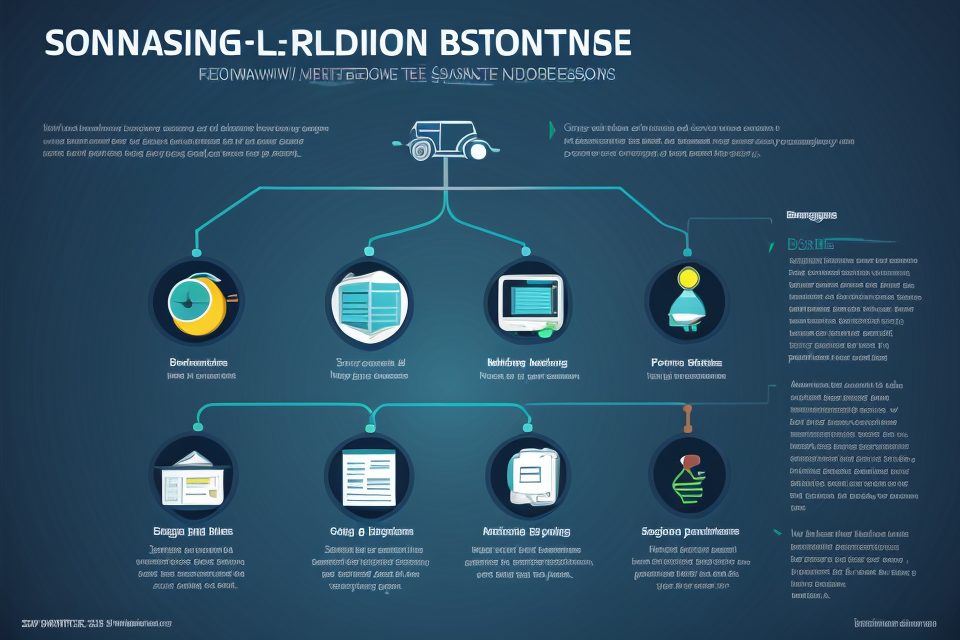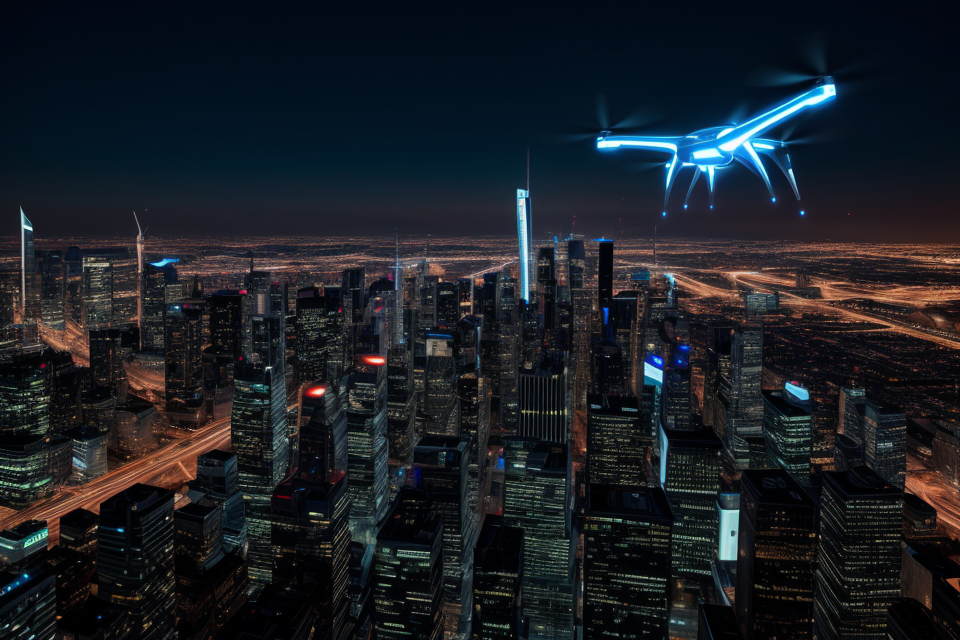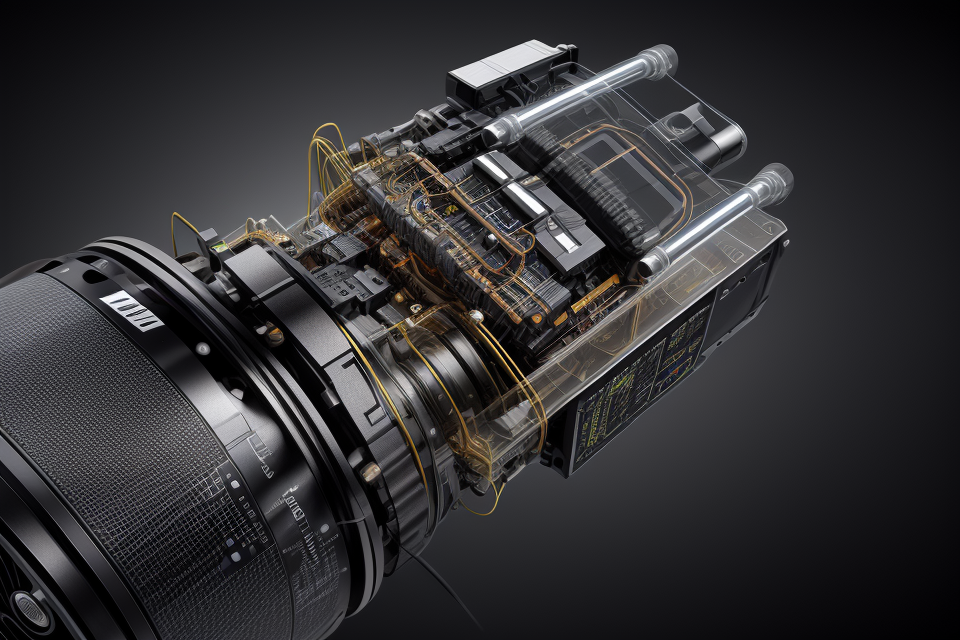
Sensors are a crucial component in modern industry, enabling businesses to monitor and control various processes and systems. They provide real-time data, which helps optimize production, improve efficiency, and reduce costs. From measuring temperature and pressure to detecting faults and predicting maintenance needs, sensors have become indispensable in many industries. In this comprehensive guide, we will explore the vital role of sensors in modern industry and how they are revolutionizing the way businesses operate. Whether you’re a professional in the field or simply curious about the technology, this guide has something for everyone. So, let’s dive in and discover the world of sensors!
Understanding the Basics of Sensors in Industry
Types of Sensors Used in Industry
In modern industry, there are various types of sensors that are used for different purposes. Here are some of the most common types of sensors used in industry:
- Mechanical sensors are used to detect physical movements or vibrations. They are commonly used in machines and equipment to monitor their performance and detect any issues.
- Optical sensors use light to detect changes in the environment. They are commonly used in vision systems, where they can detect objects, colors, and patterns.
- Electrical sensors measure electrical properties such as voltage, current, and resistance. They are commonly used in power systems and automation equipment.
- Pressure sensors measure the pressure of liquids or gases. They are commonly used in hydraulic systems, pneumatic systems, and medical equipment.
- Temperature sensors measure the temperature of the environment or a specific object. They are commonly used in HVAC systems, food processing, and pharmaceutical manufacturing.
- Humidity sensors measure the amount of moisture in the air. They are commonly used in agriculture, food storage, and pharmaceutical manufacturing.
Each type of sensor has its own unique properties and uses, and understanding the differences between them is crucial for selecting the right sensor for a specific application.
How Sensors Revolutionize Industrial Processes
- Quality control
- Inspection of products and materials for defects and ensuring compliance with standards
- Monitoring process parameters to maintain consistent quality
- Process optimization
- Collecting data on production processes to identify areas for improvement
- Implementing real-time sensing technologies to optimize production efficiency
- Predictive maintenance
- Using sensors to detect equipment wear and tear, enabling preventative maintenance
- Monitoring conditions that may indicate impending failure, reducing downtime and costs
- Environmental monitoring
- Measuring temperature, humidity, and other environmental factors in industrial settings
- Ensuring safe working conditions and preventing damage to equipment or products
- Automation and robotics
- Enabling automated decision-making and control in industrial processes
- Improving precision and efficiency in tasks such as assembly, inspection, and transportation
Applications of Sensors in Various Industries
Industry-Specific Sensor Technologies
Agriculture
In agriculture, sensors play a crucial role in monitoring and optimizing crop growth and yield. Sensors such as temperature, humidity, and light sensors help farmers to understand the environmental conditions in which their crops are growing. Additionally, soil moisture sensors can detect soil moisture levels, allowing farmers to optimize irrigation and ensure that crops receive the right amount of water. This not only conserves water but also reduces the risk of crop damage due to over-watering or under-watering.
Automotive
The automotive industry relies heavily on sensors to improve vehicle safety, performance, and efficiency. Sensors such as speed sensors, cameras, and GPS sensors help to monitor the vehicle’s surroundings and provide information about the vehicle’s speed, position, and direction. This information is used to improve safety features such as lane departure warning, automatic emergency braking, and adaptive cruise control. In addition, sensors can monitor the vehicle’s engine and fuel consumption, helping to improve fuel efficiency and reduce emissions.
Healthcare
Sensors are increasingly being used in healthcare to improve patient outcomes and provide better care. For example, sensors can be used to monitor vital signs such as heart rate, blood pressure, and oxygen saturation. This information can be used to detect changes in a patient’s condition and provide timely intervention. In addition, sensors can be used to monitor medication usage, ensuring that patients are taking their medication as prescribed.
Manufacturing
In manufacturing, sensors are used to monitor and optimize the production process. Sensors can be used to monitor the quality of raw materials, detect equipment failures, and optimize production processes. For example, sensors can be used to monitor the temperature and humidity in a manufacturing facility, ensuring that products are manufactured under optimal conditions. This not only improves product quality but also reduces waste and downtime.
Oil and Gas
The oil and gas industry relies heavily on sensors to monitor and optimize the extraction and transportation of oil and gas. Sensors can be used to monitor the flow of oil and gas, detect leaks, and optimize production processes. In addition, sensors can be used to monitor the environment around oil and gas extraction sites, ensuring that environmental regulations are met.
Renewable Energy
Sensors are increasingly being used in the renewable energy industry to monitor and optimize the performance of renewable energy systems. For example, sensors can be used to monitor the output of solar panels and wind turbines, ensuring that they are operating at maximum efficiency. In addition, sensors can be used to monitor weather conditions, helping to predict the output of renewable energy systems and optimize their performance.
Overall, sensors play a vital role in modern industry, providing valuable data that can be used to optimize processes, improve safety, and reduce waste. As technology continues to advance, it is likely that the use of sensors will continue to grow and become even more integral to modern industry.
Case Studies: Successful Implementation of Sensors in Industry
Smart farming and precision agriculture
In recent years, the agricultural industry has seen a significant shift towards smart farming and precision agriculture. Sensors play a vital role in this transition by providing real-time data on various environmental factors such as soil moisture, temperature, and nutrient levels. This data allows farmers to make informed decisions about irrigation, fertilization, and crop management, leading to increased efficiency and yield.
One example of successful implementation of sensors in precision agriculture is the use of soil moisture sensors. These sensors are placed in the soil to measure moisture levels, which can then be used to optimize irrigation schedules. By reducing water usage and ensuring that crops receive the appropriate amount of water, farmers can save resources and reduce water waste.
Advanced driver-assistance systems (ADAS) in vehicles
Sensors are also critical in the development of advanced driver-assistance systems (ADAS) in vehicles. These systems use sensors such as cameras, radar, and lidar to gather data on the vehicle’s surroundings, which is then used to improve safety and performance.
For example, radar sensors are used in adaptive cruise control systems to maintain a safe distance between vehicles. Camera sensors are used in lane departure warning systems to alert drivers when they are drifting out of their lane. Lidar sensors are used in autonomous vehicles to create a 3D map of the vehicle’s surroundings, which is used to make decisions about navigation and obstacle avoidance.
Wearable health devices and medical monitoring
Sensors are also playing an increasingly important role in the healthcare industry. Wearable health devices such as fitness trackers and smartwatches use sensors to monitor various health metrics such as heart rate, sleep patterns, and activity levels. This data can be used to help individuals make informed decisions about their health and wellness.
In addition, sensors are being used in medical monitoring devices to help healthcare professionals monitor patients’ vital signs and detect potential health issues. For example, pulse oximeters use sensors to measure blood oxygen levels, which can be an indicator of various health conditions. Continuous glucose monitors use sensors to track blood sugar levels in individuals with diabetes, allowing for more accurate insulin dosing and improved patient outcomes.
Industry 4.0 and the Internet of Things (IoT)
Sensors are also a critical component of Industry 4.0 and the Internet of Things (IoT). In Industry 4.0, sensors are used to collect data on various industrial processes, which can then be used to optimize efficiency and productivity. For example, sensors can be used to monitor equipment performance and predict maintenance needs, reducing downtime and improving overall system reliability.
In the IoT, sensors are used to collect data on various environmental factors such as temperature, humidity, and light levels. This data can be used to optimize energy usage, improve building automation, and enhance overall system efficiency.
Predictive maintenance in manufacturing
Sensors are also being used in predictive maintenance in manufacturing. By placing sensors on equipment, manufacturers can collect data on equipment performance and identify potential issues before they become major problems. This can help to reduce downtime, improve equipment reliability, and extend equipment lifespan.
For example, vibration sensors can be used to detect anomalies in equipment operation, which can be an indicator of potential issues such as bearing wear or motor failure. By identifying these issues early, manufacturers can take proactive steps to address them, reducing the likelihood of unplanned downtime.
Smart grid and renewable energy management
Finally, sensors are playing an increasingly important role in the smart grid and renewable energy management. In the smart grid, sensors are used to collect data on energy usage and generation, which can be used to optimize energy distribution and reduce energy waste.
In renewable energy management, sensors are used to
Challenges and Future Trends in Sensor Technology
Integration and Interoperability Issues
Integration and interoperability are crucial challenges in sensor technology, particularly as modern industries increasingly rely on the seamless exchange of data between different sensor systems. This section will delve into the various issues surrounding integration and interoperability in sensor technology, including:
Standards and Protocols
The lack of standardization in sensor technology can lead to compatibility issues, especially when different manufacturers use proprietary protocols. The absence of a single, universally accepted standard for sensor communication can hinder the smooth integration of sensors into larger systems. Industries must navigate a complex landscape of competing standards, such as SAE J1939, MQTT, and OPC UA, to ensure that their sensor systems can communicate effectively with other devices.
Data Integration and Analytics
Data integration and analytics are essential components of modern sensor systems. As industries collect vast amounts of data from various sensors, they must develop robust analytics capabilities to derive meaningful insights from this information. Integrating data from different sensors can be challenging due to variations in data formats, measurement units, and data rates. Moreover, sensor data often requires preprocessing and filtering to remove noise and errors, which can further complicate the integration process.
Security and Privacy Concerns
Security and privacy concerns are paramount in sensor technology, as the data collected by sensors can be sensitive and potentially reveal confidential information. As industries increasingly rely on sensor data to make critical decisions, they must ensure that this data is protected from unauthorized access and manipulation. Implementing robust security measures, such as encryption and access control, is essential to prevent data breaches and protect the privacy of individuals involved.
In conclusion, integration and interoperability issues are significant challenges in sensor technology, and industries must navigate these challenges to harness the full potential of sensor systems. Standardization, data integration, and security are critical areas that require attention to ensure the seamless integration of sensor systems into modern industries.
Emerging Technologies and Innovations
Quantum sensors
Quantum sensors are a cutting-edge technology that harnesses the principles of quantum mechanics to improve sensor performance. These sensors offer enhanced sensitivity and precision, making them suitable for applications such as precision navigation, medical imaging, and environmental monitoring. The development of quantum sensors is driven by advancements in quantum computing and quantum communication, which enable the manipulation of quantum states to achieve unprecedented levels of accuracy.
Bio-inspired sensors
Bio-inspired sensors are designed to mimic the biological sensing mechanisms found in nature. These sensors draw inspiration from the human eye, nose, and skin to create innovative sensing solutions. Bio-inspired sensors exhibit high sensitivity, selectivity, and adaptability, making them suitable for a wide range of applications, including environmental monitoring, biomedical research, and chemical sensing. The development of bio-inspired sensors is fueled by advances in materials science, biotechnology, and microfabrication techniques, which enable the creation of complex and functional structures at the nanoscale.
Machine learning and artificial intelligence in sensor systems
Machine learning and artificial intelligence (AI) are increasingly being integrated into sensor systems to enhance their performance and capabilities. By combining machine learning algorithms with sensor data, it is possible to improve signal processing, pattern recognition, and predictive modeling. This integration enables sensors to learn from their environment, adapt to changing conditions, and make intelligent decisions. The application of machine learning and AI in sensor systems is expected to drive innovation and transform industries such as automotive, healthcare, and agriculture.
Sensor fusion and data aggregation
Sensor fusion and data aggregation are techniques used to combine data from multiple sensors to improve the accuracy and reliability of sensor systems. By integrating data from different sensors, it is possible to compensate for sensor biases, reduce noise, and enhance the overall performance of the system. Sensor fusion and data aggregation are widely used in applications such as navigation, robotics, and surveillance, where the need for precise and reliable information is critical.
Sensor-based digital twins
Sensor-based digital twins are virtual representations of physical systems that incorporate sensor data to simulate the behavior of the system. These digital twins can be used to model complex systems, perform simulations, and predict future behavior. By integrating sensor data into digital twins, it is possible to create real-time models that can be used for predictive maintenance, fault diagnosis, and optimization of system performance. The application of sensor-based digital twins is expected to revolutionize industries such as manufacturing, aerospace, and energy, by enabling proactive decision-making and reducing downtime.
FAQs
1. What are sensors and how do they work?
Sensors are devices that detect and respond to physical inputs, such as temperature, pressure, and motion. They work by converting the physical input into an electrical signal, which can then be processed by a computer or other electronic device. There are many different types of sensors, each designed to detect specific physical inputs.
2. Why are sensors important in industry?
Sensors are essential in industry because they allow machines and systems to collect data about their environment and respond to changes in real-time. This can improve efficiency, safety, and productivity in many different industries, from manufacturing to transportation to agriculture.
3. What are some examples of sensors used in industry?
There are many different types of sensors used in industry, including temperature sensors, pressure sensors, motion sensors, and humidity sensors. Some examples of how these sensors are used include:
* Temperature sensors are used to monitor the temperature of machinery and equipment, to ensure that they are operating within safe ranges.
* Pressure sensors are used to monitor the pressure of fluids and gases in pipes and other systems, to prevent leaks and other problems.
* Motion sensors are used to detect the movement of people and objects, to trigger alarms or other responses.
* Humidity sensors are used to monitor the moisture content of materials and products, to ensure that they meet specifications.
4. How do sensors improve efficiency in industry?
Sensors can improve efficiency in industry by providing real-time data about the performance of machines and systems. This data can be used to identify problems and make adjustments to improve efficiency, reduce waste, and prevent downtime. For example, a temperature sensor can alert operators to a problem with a machine before it causes a more serious issue, allowing them to make a quick fix and avoid a costly repair.
5. Are sensors expensive to implement in industry?
The cost of implementing sensors in industry can vary depending on the specific application and the type of sensor being used. In some cases, the cost of the sensors themselves may be relatively low, but the cost of installing and maintaining the system may be higher. However, the benefits of using sensors in industry often outweigh the costs, and many companies find that the investment in sensors pays off in the long run.


